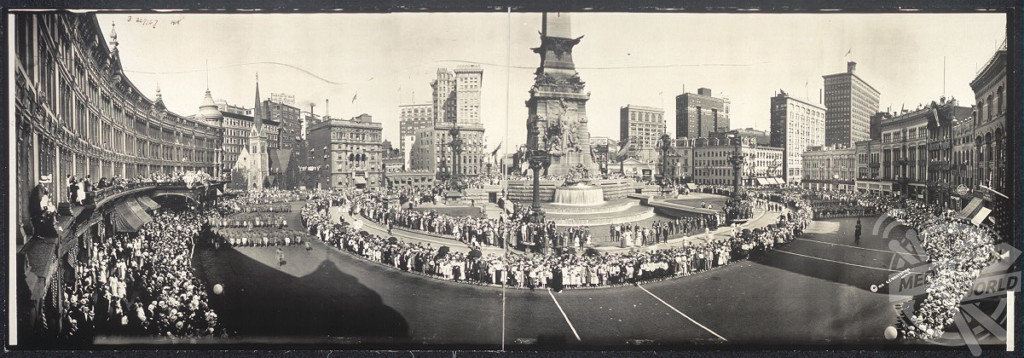
By Alex Jones
CENTURY-OLD panoramas from the First World War capture the joy, despair and destruction of the historic event.
On 11 November 1918, the guns fell silent.
The 11th minute of the 11th day of the 11th month signified an end to the bloody four year war which saw more than 40 million people lose their lives.

Although the fighting ended on Armistice Day, the echoes of the conflict would ring down the ages.
Following the end of World War One, tens of thousands of troops who had made the ultimate sacrifice still had to be buried with dignity, many more war-weary soldiers had to be returned to their families, and there was a duty to pay tribute to the fallen.
These stunning panoramas, from the Library Of Congress in the USA, depict a heavily churned up Flanders Field where much of the brutal frontline fighting took place in 1919, thousands of soldiers on horseback remembering their dead comrades at the Suresnes American Cemetery on the outskirts of Paris in 1920, and the freshly installed war graves at the Argonne Cemetery near Verdun.

Other more jubilant scenes show US troops returning home to their loved ones and a regiment of no doubt relieved men who signed up on the very same day the war was concluded.
Under President Woodrow Wilson, the United States remained neutral until 1917 and then entered the war on the side of the Allied Forces – the United Kingdom, France, and Russia.
Wilson was keen to keep the US out of the gruelling war of attrition where thousands of people died in terrible conditions every day in a bid to gain just inches of ravaged No Man’s Land.
He was ultimately unable to keep the United States out of the war, largely because of escalating German aggression.

On May 7 1915, the Germans sunk the British ocean liner RMS Lusitania, which had over a hundred Americans on board. Wilson warned that the United States would not permit unrestricted submarine warfare or any further violations of international law.
Germany did not heed the president’s warning and resumed submarine warfare several months later and even attempted to team up with Mexico to stand against the United States.
Following more American deaths on ships, Wilson had no choice but to declare war on April 6 1917.

Over 1.3million United States citizens immediately answered their country’s call to arms.
A million more signed up following conscription a couple of months later.
When the war concluded in November 1918, with a victory for the Allies, more than 2 million U.S. troops had served at the Western Front in Europe, and more than 50,000 of them died.






